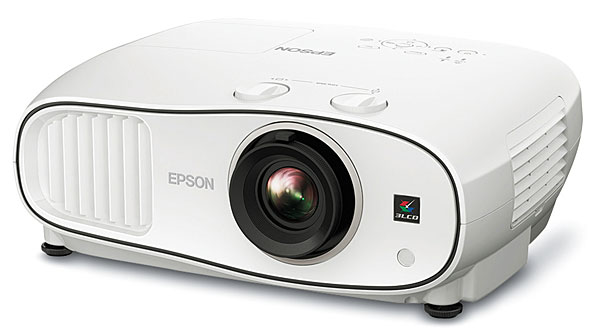Epson Home Cinema 3700 LCD Projector Review Page 2
Contrast is another area where the 3700 impressed me during my initial setup and measurement session. The projector provides Auto Iris settings of Normal, Medium, and High Speed. When combined with the High Power Consumption mode, High Speed Auto Iris yielded a contrast ratio of 30,300:1—a measurement that leaves other low-cost projectors in the dust. That said, in actual use (viewing movies instead of video test patterns), the contrast proved only average: better than other budget projectors I’ve tested recently, but not nearly in the same league as Epson’s own 6040UB and two other $4,000vicinity projectors I’ve reviewed, the Sony VPL-HW65ES and the JVC DLA-X550R (both in the April 2016 issue). Auto Iris also introduced some motor noise in High Speed mode, though the issue was largely masked by movie soundtracks.
 Other setup features on the 3700 include a two-point custom color temperature adjustment for grayscale, as well as color management system adjustments with Hue, Saturation, and Brightness sliders. There are also Gamma presets plus a custom Gamma adjustment, Frame Interpolation modes (to reduce motion blur while adding a “video” effect to film-based content), and enough Image Enhancement modes to keep you tweaking picture sharpness and noise reduction for hours on end.
Other setup features on the 3700 include a two-point custom color temperature adjustment for grayscale, as well as color management system adjustments with Hue, Saturation, and Brightness sliders. There are also Gamma presets plus a custom Gamma adjustment, Frame Interpolation modes (to reduce motion blur while adding a “video” effect to film-based content), and enough Image Enhancement modes to keep you tweaking picture sharpness and noise reduction for hours on end.
2D Performance
I started out my auditions by watching a Blu-ray of Kubo and the Two Strings, a stop-motion animated film from the same production studio that created Coraline. In the scene where Kubo goes to the village cemetery to present a lantern in honor of his dead father, the surrounding forest displayed a rich range of greens, and the robes worn by the villagers showed a wide variety of subtle pastel shades. Later, the bright orange, pink, and yellow hues of the sunset came across as extremely vivid, especially in contrast to the darkened tree trunks in the foreground.
Skintones of real humans, as opposed to puppets, were also conveyed well by the 3700. For example, in the scene from Ex Machina where Nathan (Oscar Isaac) and Caleb (Domhnall Gleeson) walk and discuss the reasons why the founder of the Google-type operation has brought the coder to his mountain retreat—one of the few non-claustrophobic, outdoor scenes in the film—the differences between Nathan’s swarthy complexion and Caleb’s pale skin came across clearly. At the same time, bright colors like the orange zipper on Caleb’s jacket and the deep green-blue of a waterfall in the background came through with all their intensity intact.
Another scene from Kubo delivered a good example of the Epson’s handling of dark images. After wandering from the cemetery, Kubo is approached by the ghostly forms of his mother’s malevolent sisters. On the 3700, the dark recesses of the forest looked reasonably deep, and I could see a good amount of shadow detail in the trunks of trees and in the robes of the ghoulish figures.
3D Performance
I find it interesting that, as the Blu-ray 3D format wanes, 3D-capable projectors are getting really good at displaying it. When I watched the final sequence from The Walk, where French high-wire artist Philippe Petit (Joseph GordonLevitt) crosses the Twin Towers, the Epson delivered an excellent sense of depth between the suspended figure and the vast expanse of the city below him. While Epson’s active-shutter glasses dimmed the picture, it looked sufficiently bright in 3D Cinema mode as long as the 3700’s Medium Power Consumption setting was also selected.
Another impressive aspect of the Epson’s 3D performance was picture sharpness. Images displayed excellent clarity. I also didn’t see any crosstalk (ghosting)—the bane of 3D video—even when watching scenes from Hugo that I’ve long used as a torture test for ghosting artifacts on 3D displays.

Conclusion
Epson’s Home Cinema 3700 offers an exceptional mix of features and performance for its $1,500 price. The 1.6x zoom lens and the horizontal/vertical lens shift adjustment provide a level of installation flexibility that exceeds what you typically get with budget projectors, and it comes with a feature-packed remote control. The 3700 delivers a screamingly bright picture out of the box, but the wide array of adjustments, including a contrast-enhancing Auto Iris mode, lets you tune the picture for a properly light-controlled home theater. The projector also does a great job displaying Blu-ray 3D, in case you still have an interest in that format. Epson’s mid-range 3700 can’t match the performance of projectors near the $4,000 price point, but it’s a definite cut above the budget projector crowd.























































